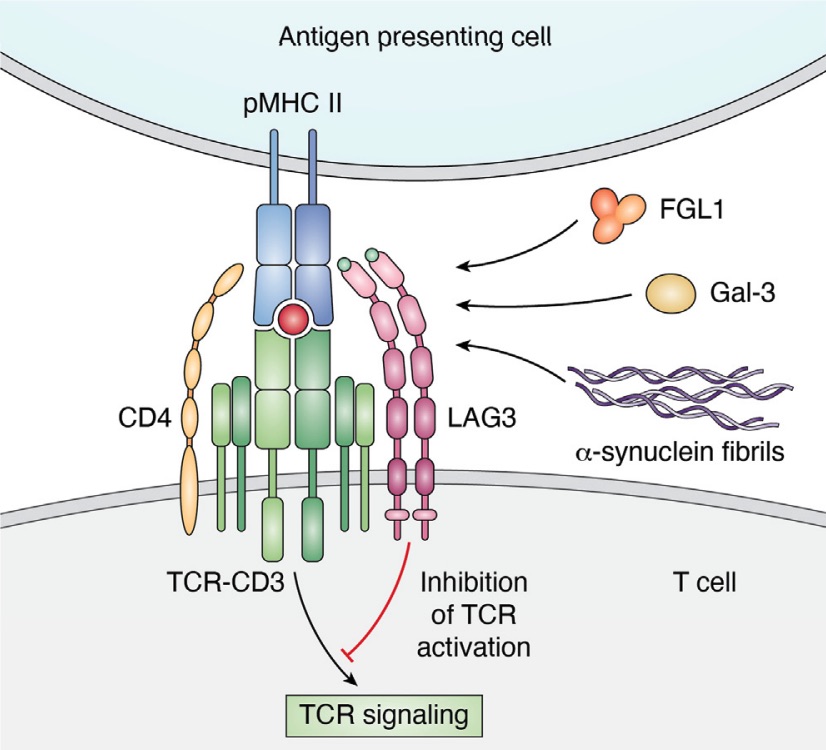Hi-Affi™ hCTLA-4/hLAG3 Dual Humanized Mouse Model
Human cytotoxic T lymphocyte-associated antigen 4 (hCTLA-4) and lymphocyte-activation gene 3 (hLAG3) are widely accepted as immunosuppressive receptors. Blocking these negative regulatory receptors could activate the immune system to attack tumor cells, which has been adopted as a clinical therapy. Creative Biolabs has successfully established an optimized Hi-Affi™ “humanized” animal platform to offer specialty manipulated hCTLA-4/hLAG3 dual humanized mice for our clients all over the world.
hCTLA-4/hLAG3 Molecule
hCTLA-4, also known as CD152, is a transmembrane protein encoded by the hCTLA-4 gene. It resides in activated CD4+ and CD8+ T cells and has a high degree of homology with the costimulatory molecule receptor (CD28) on the surface of T cells. hCTLA-4 is a member of the immunoglobulin superfamily (IgSF) and binds to the ligands CD86 (B7-2) and CD80 (B7-1).
hLAG3, also called CD223, belongs to the globulin superfamily. It resides in activated natural killer cells (NKs), T cells, and other immune cells. LAG3 consists of three parts: the extracellular domain, the transmembrane domain, and the cytoplasmic domain. It has several ligands, including MHC class II molecule. Tumor cells escape immune attack via binding to hLAG3 on the surface of immune cells by expressing MHC class II molecules on their own. Therefore, hLAG3 on the membrane surface has an immunosuppressive function. Besides, a recent study claimed that the main ligand of hLAG3 is FGL1.
 Fig. 1 Multiple ligands may engage the ectodomain of LAG3 to stimulate its inhibitory function. 1
Fig. 1 Multiple ligands may engage the ectodomain of LAG3 to stimulate its inhibitory function. 1
hCTLA-4/hLAG3 Signal Pathway
The key to hCTLA-4's immunomodulatory function lies in the control of CD4+ FoxP3-CD8+ T cells and regulatory T cells (Tregs). hCTLA-4 can stop the activated T cell responses and mediate Treg inhibition. Current research shows that hCTLA-4 inhibits T cell responses through multiple mechanisms. It can competitively block the binding of CD28 to B7 or recruit phosphatase to the intracellular domain of hCTLA-4 to reduce T cell receptor (TCR) and CD28 signals. And, CTLA-4 decreases the expression of CD80 and CD86 in antigen-presenting cells (APCs) or removes them from APCs by trans-endocytosis, leading to the reduction in CD28 mediated T cell activation. Also, hCTLA-4 will mediate the binding of dendritic cells (DCs) to CD80/CD86 and induce the expression of tryptophan degrading enzyme IDO, resulting in TCR inhibition.
The hLAG3 is an important negative costimulatory molecule from the immunoglobulin family. hLAG3 is expressed on activated natural Tregs and CD4+ FoxP3+ Tregs, and its expression level is higher than that observed on activated effector CD4+ T cells. Blocking hLAG3 on Tregs abolished Tregs suppressive function. Besides, Tregs-mediated T-cell homeostasis control requires hLAG3. These research results together support the function of hLAG3 in Tregs function. hLAG3 overexpression also causes T cell depletion. Abnormally functioning or depleted T cells show defects in proliferation capacity or are unable to exert effector functions through TCR stimulation (producing cytotoxicity and secreting cytokines).
Development of hCTLA-4/hLAG3 Dual Humanized Mice
hLAG3 is considered to be a more attractive target than other immune checkpoint proteins. Inhibiting hLAG3 allows T cells to regain cytotoxicity, thereby enhancing the killing effect on tumors. At the same time, inhibiting hLAG3 can reduce the function of Tregs to suppress immune responses. Blocking hCTLA-4 by its antibody could reduce Tregs and activate TCR. Thus, inhibiting both hLAG3 and hCTLA-4 could augment the immunity against tumor cells and be a promising therapy for cancer patients. Creative Biolabs is your trustworthy CRO partner recognized by our global clients. We have many years of experience in providing preclinical CRO services and advanced lots of drug development projects using our Hi-Affi™ “humanized” animal models. If you are about to carry out a study project using these humanized mice, please feel free to contact us for further discussions. Our scientist will provide you with scientific advice on your research and assist you in your study implementation.
Creative Biolabs also offers other various Humanized Mouse Models you may be interested in:
Reference
- Mariuzza, Roy A., Salman Shahid, and Sharanbasappa S. Karade. "The immune checkpoint receptor LAG3: Structure, function, and target for cancer immunotherapy." Journal of Biological Chemistry (2024): 107241. Distributed under Open Access license CC BY 4.0, without modification.
For Research Use Only.
